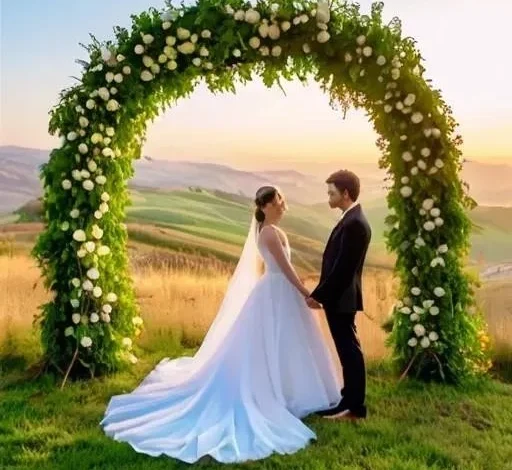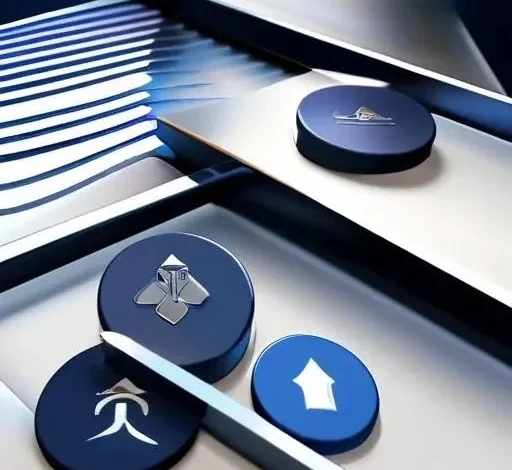The Renaissance of Architraves: Sophisticated Architectural Accents in Contemporary Design
The evolution of architectural design is a constant dance between innovation and tradition, with seemingly minor details often holding the key to transformative aesthetics. One such detail, often overlooked, is the architrave. Modern architraves, far from being mere remnants of classical architecture, are experiencing a renaissance, offering designers unprecedented opportunities to add sophisticated architectural accents to contemporary spaces. We will explore how these elements are being reimagined and utilized in ways that challenge conventional notions of form and function. This piece delves into the fresh perspectives driving this resurgence and explores the diverse applications of modern architectural accents in current design trends.
For centuries, the architrave served as the lowermost horizontal member of an entablature, resting directly on the columns in classical architecture. It was a structural necessity, supporting the frieze and cornice above. However, its modern interpretation has liberated it from these strict structural constraints, allowing for greater creative freedom. Today, architraves can be found in a variety of materials, shapes, and sizes, often serving purely decorative purposes, adding a layer of visual interest and refinement to interior and exterior spaces.
- Material Exploration: From traditional wood and stone to innovative composites and metals, the material palette for architraves has expanded significantly.
- Shape Shifting: Gone are the days of strictly rectangular profiles. Curved, angled, and even asymmetrical architraves are becoming increasingly popular.
- Functional Integration: Modern architraves can also be integrated with lighting, ventilation, or even storage solutions, seamlessly blending form and function.
The versatility of modern architraves allows them to be incorporated into a wide range of architectural projects, from residential homes to commercial buildings. They can be used to define doorways, windows, and other openings, adding a sense of formality and sophistication. They can also be employed as decorative elements on walls and ceilings, creating visual interest and texture. Furthermore, the strategic use of architraves can subtly influence the perception of space, making a room feel taller, wider, or more intimate.
- Framing Focal Points: Using architraves to highlight artwork, fireplaces, or other architectural features.
- Creating Visual Continuity: Employing architraves to seamlessly connect different spaces or elements within a building.
- Adding Texture and Depth: Utilizing textured or patterned architraves to enhance the visual interest of a space.
Consider the following examples comparing traditional and modern approaches:
| Feature | Traditional Architrave | Modern Architrave |
|---|---|---|
| Material | Stone, Wood | Wood, Metal, Composites, Glass |
| Function | Structural Support, Decoration | Decoration, Integration with Systems (lighting, etc.) |
| Form | Rectangular, Simple Profiles | Varied Shapes, Complex Profiles, Asymmetrical Designs |
As we continue to explore the future of architecture, the role of seemingly small details like the architrave will become increasingly important. Modern architraves offer designers a powerful tool for adding character, sophistication, and functionality to their projects. The possibilities are endless, limited only by the imagination.
The future of architectural design hinges on a deep appreciation for detail, and the continued evolution of architectural accents like the architrave is a testament to this. Embracing these fresh perspectives allows us to create spaces that are not only visually stunning but also deeply meaningful and engaging.
The evolution of architectural design is a constant dance between innovation and tradition, with seemingly minor details often holding the key to transformative aesthetics. One such detail, often overlooked, is the architrave. Modern architraves, far from being mere remnants of classical architecture, are experiencing a renaissance, offering designers unprecedented opportunities to add sophisticated architectural accents to contemporary spaces; We will explore how these elements are being reimagined and utilized in ways that challenge conventional notions of form and function. This piece delves into the fresh perspectives driving this resurgence and explores the diverse applications of modern architectural accents in current design trends.
The Reinvention of a Classical Element
For centuries, the architrave served as the lowermost horizontal member of an entablature, resting directly on the columns in classical architecture. It was a structural necessity, supporting the frieze and cornice above. However, its modern interpretation has liberated it from these strict structural constraints, allowing for greater creative freedom. Today, architraves can be found in a variety of materials, shapes, and sizes, often serving purely decorative purposes, adding a layer of visual interest and refinement to interior and exterior spaces.
- Material Exploration: From traditional wood and stone to innovative composites and metals, the material palette for architraves has expanded significantly.
- Shape Shifting: Gone are the days of strictly rectangular profiles. Curved, angled, and even asymmetrical architraves are becoming increasingly popular.
- Functional Integration: Modern architraves can also be integrated with lighting, ventilation, or even storage solutions, seamlessly blending form and function.
Applications of Modern Architraves
The versatility of modern architraves allows them to be incorporated into a wide range of architectural projects, from residential homes to commercial buildings. They can be used to define doorways, windows, and other openings, adding a sense of formality and sophistication. They can also be employed as decorative elements on walls and ceilings, creating visual interest and texture. Furthermore, the strategic use of architraves can subtly influence the perception of space, making a room feel taller, wider, or more intimate.
Examples of Innovative Architrave Use:
- Framing Focal Points: Using architraves to highlight artwork, fireplaces, or other architectural features.
- Creating Visual Continuity: Employing architraves to seamlessly connect different spaces or elements within a building.
- Adding Texture and Depth: Utilizing textured or patterned architraves to enhance the visual interest of a space.
Consider the following examples comparing traditional and modern approaches:
| Feature | Traditional Architrave | Modern Architrave |
|---|---|---|
| Material | Stone, Wood | Wood, Metal, Composites, Glass |
| Function | Structural Support, Decoration | Decoration, Integration with Systems (lighting, etc.) |
| Form | Rectangular, Simple Profiles | Varied Shapes, Complex Profiles, Asymmetrical Designs |
As we continue to explore the future of architecture, the role of seemingly small details like the architrave will become increasingly important. Modern architraves offer designers a powerful tool for adding character, sophistication, and functionality to their projects. The possibilities are endless, limited only by the imagination.
The future of architectural design hinges on a deep appreciation for detail, and the continued evolution of architectural accents like the architrave is a testament to this. Embracing these fresh perspectives allows us to create spaces that are not only visually stunning but also deeply meaningful and engaging.
The Future of Architraves: Questions to Consider
But what truly lies ahead for this versatile element? Can we expect even more radical departures from classical forms? Will sustainability become a primary driver in material selection and design? Perhaps architraves will evolve into interactive elements, responding to user needs or environmental conditions. Are we on the cusp of seeing architraves that actively contribute to a building’s energy efficiency or air quality?
- Material Innovation: Will we see architraves crafted from bio-based materials or recycled plastics, further blurring the lines between architecture and environmental responsibility?
- Technological Integration: Could architraves incorporate smart technology, providing ambient lighting, temperature control, or even security features?
- Personalized Design: Will mass customization allow homeowners to design architraves that perfectly reflect their individual style and preferences?
Pushing the Boundaries: Unanswered Questions
How far can we push the boundaries of architrave design before it loses its connection to its historical roots? Does the very essence of an architrave need to be redefined in the context of modern architecture? What role will digital fabrication techniques play in shaping the future of architrave design? Could we potentially see architraves that are entirely digitally designed and 3D-printed, offering unparalleled levels of customization and complexity?
Ultimately, the future of architraves, and indeed all architectural accents, is an open question. It’s a conversation that involves architects, designers, builders, and homeowners alike. Are you ready to explore the possibilities?



